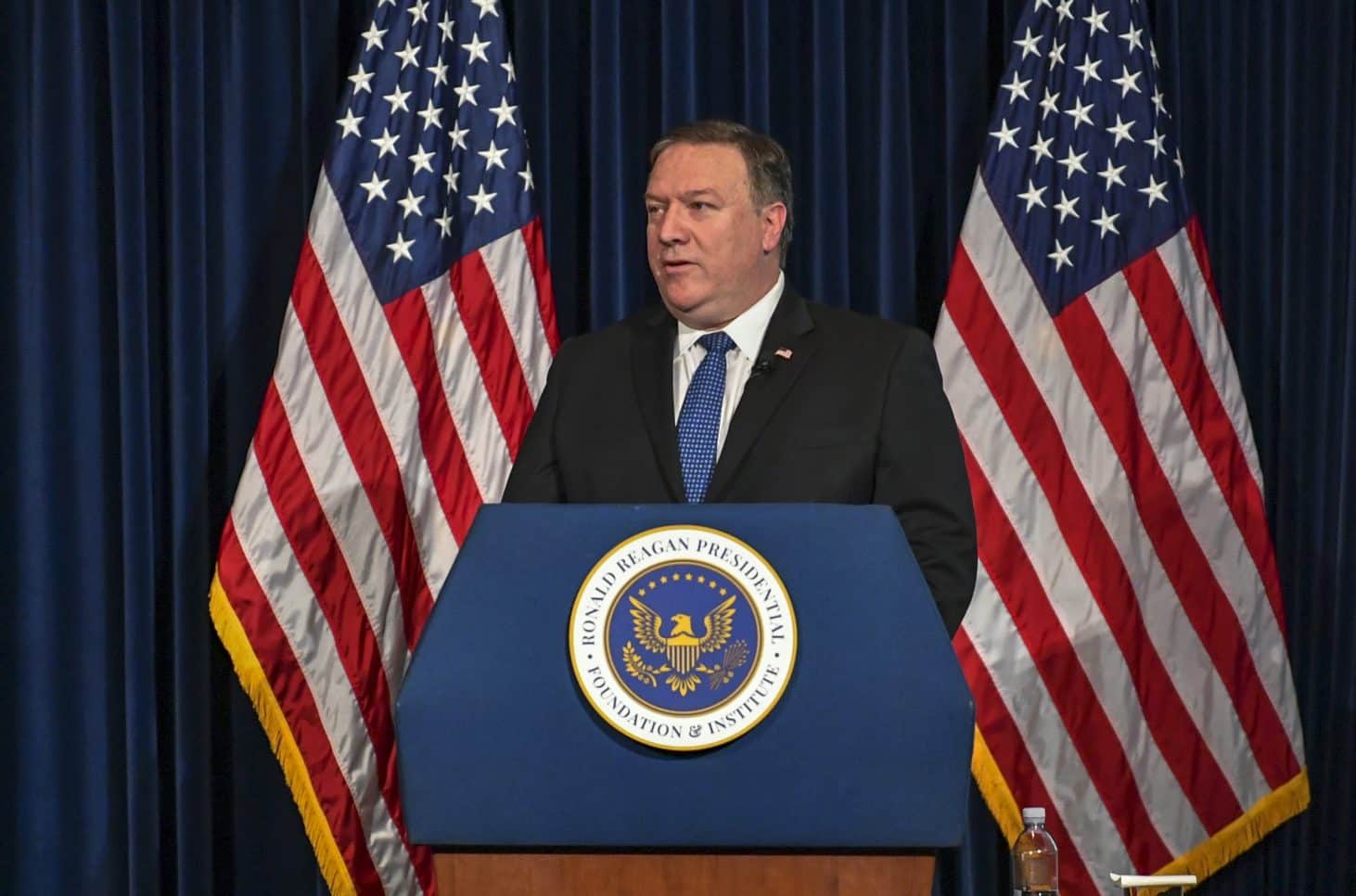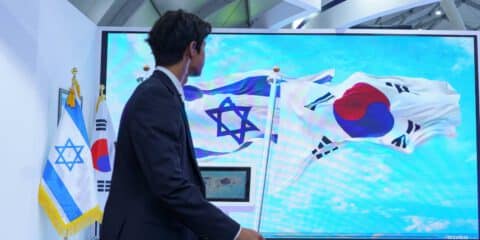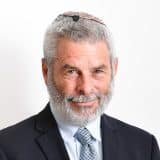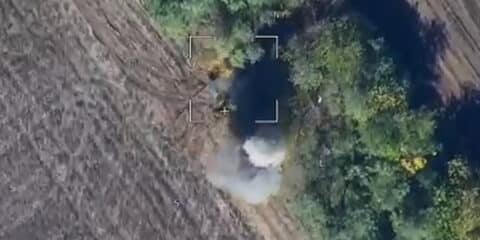The US can and should develop a coherent region-wide strategy, involving US allies including Israel, to impede Iran’s ability to continue developing in ways detrimental to the region’s security. However, Iran is proficient in the practice of using proxies and paramilitary methods, as well as in the combination of paramilitary and political struggle. Its response to a US-led strategy to contain and roll back their influence is likely to focus on these areas.
Summary
The decision of the United States to quit the nuclear deal with Iran marks a watershed moment in the effort to build a coherent policy to contain and roll back Iran in the many areas in which it has advanced over the last decade. The US possesses a wide variety of assets across the region. Should it wish to formulate a coherent strategy to retard Iran’s progress in those areas, the infrastructure in the form of determined allies and clear options is there. This paper will look at these assets and examine the possible shape of a coherent region-wide strategy, involving US allies including Israel, to impede Iran’s ability to continue developing in ways detrimental to the region’s security.
Should the US wish to adopt such a strategy, pressure can begin to be applied on the Iranians in a coordinated fashion, in the economic, military and political spheres. One can expect the Iranians to respond. Their preferred methods of revolutionary and political warfare mean that they are deficient in conventional capacity. They are also deficient in economic muscle. These are the two main advantages of the West and its allies. The Iranians are, however, proficient in the practice of using proxies and paramilitary methods, as well as in the combination of paramilitary and political struggle. Their response to a US-led strategy to contain and roll back their influence is likely to focus on these areas.
Introduction
On May 21, 2018, two weeks after the Trump Administration’s announcement that it was withdrawing from the Joint Comprehensive Plan of Action (JCPOA), Secretary of State Mike Pompeo gave his first speech since assuming his incumbency. Speaking at the Heritage Foundation in Washington, DC, Pompeo made it clear that any new nuclear deal would require Iran to meet twelve demands. The demands Pompeo outlined pertained not only to the nuclear file; eight of them focused on non-nuclear issues. These represented a general call for a reversal of Iranian Mideast strategy, combined with an encouragement of the Iranian population to revolt against the regime.
The twelve demands included a call for Iran to halt its ballistic missile program, to end its interventions in Syria and Yemen, to cease support for Hizballah and Hamas, to permit the disarming of the Shia militias in Iraq, to provide the International Atomic Energy Agency (IAEA) with unqualified access to all sites throughout Iran, to end Islamic Revolutionary Guards Corps (IRGC) support for terrorist forces around the world, to cease threatening to destroy Israel and to stop firing missiles at Saudi Arabia and the United Arab Emirates.
These demands are clearly not issued with the expectation of swift compliance. Rather, they announce the commencement of a general strategic effort by the United States and its regional allies to contain and roll back Iran.
In an interview with The National newspaper on July 11, 2018, Pompeo addressed the matter of regional anti-Iran strategy in the following terms:
“First, a united opposition is very important… We have great partners in the UAE, we have great partners with the Saudis and the Bahrainis. Many countries are pushing back, demonstrating that what we are asking is pretty simple, [for] Iran to become a more normal country. The tools we will use will be varied; they will often be diplomatic. You see the US-led efforts on sanctions, so [we will be using] economic tools.… When Iran does things like launch missiles that come [to the UAE] or go to Riyadh, we are prepared to defend the region militarily.”
Teheran has been perhaps the main beneficiary of the strife in the Middle East of recent years, and specifically of the collapse and fragmentation of a number of regional states. The “prototype” for this process was the collapse of Lebanon in the 1970s and 1980s, as well as the establishment of Hizballah by the IRGC and its subsequent emergence to a prominent and then unchallenged position of power and influence in Lebanon. At that time, the collapse of Lebanon along sectarian lines was an anomaly in a Middle East mainly consisting of strong, centralized states and regimes.
The events in large swaths of the region since 2010, however, represented in a certain sense an application of Lebanese conditions to other, larger areas; namely, the weakening or collapse of the state and the emergence of conflict on sectarian and/or ethnic grounds. These conditions enabled the IRGC to utilize its methods of proxy building and irregular warfare on a far larger canvas than previously. The results are self-evident: In Yemen, in Syria and in Iraq, the side identified with Iran has benefited from the IRGC’s methods.
In Syria, the Assad regime would likely have fallen in the period between 2013 and 2015 without the mobilization by Iran of paramilitary clients from Lebanon, Iraq, Afghanistan and Pakistan. In Iraq, the mobilization of the Hashd al-Shaabi (Popular Mobilization Units – the Shia militias) in 2014 played an important role both in the halting of ISIS and, subsequently, in the consolidation and advance of Iranian political and military power in the country. In Yemen, Iranian assistance to the Houthi rebels (albeit on a smaller scale than the previous examples) has enabled the continuation of the insurgency, which has served as a context in which Iran has directly launched missiles at Saudi cities.
The US decision to quit the JCPOA and Pompeo’s subsequent outlining of US demands of Iran represent a recognition that Iran’s expansion in the region is a danger to US allies and a challenge to the (already weakened) US-guaranteed security architecture which has dominated the region since the end of the Cold War.
Arguably, the period of unrest and change from below has for the moment largely passed in the Arab world. There is today no large-scale, popular-led insurgency in the Arab world. Indeed, states are currently reasserting themselves in a variety of spaces. As the sponsorship and exploitation of insurgency is the central skill of the IRGC and its Qods Force, the present moment of consolidation is an ideal time to begin a pushback to ensure that the position, i.e., the situation, of the Iranians in 2016–17 will form a high-water mark of Iranian advance and influence.
What form might the implementation of a regimen of restraint and reversal on the part of Iran, conceived by the US and its allies, take? And how might Iran seek to respond to such a plan? We will explore both these issues, concluding with a preliminary assessment of prospects for success for the US-led efforts and likely difficulties ahead, and a focus on the role of Israel within this broader picture.
What Form Might a US-Led Strategy Take?
There are three broad areas of available pressure which could form components of a US-led strategy of containment and rollback of Iran in the Middle East: economic activity (i.e., sanctions), military activity and political activity. I will consider each area separately.
ECONOMIC PRESSURE
Iran today is a country in the midst of an economic and environmental crisis. The rial fell 47 percent against the dollar between January and June 2018. At the time of this writing, the dollar was being offered for 87,000 rials. The country is blighted by drought. Precipitation across Iran has fallen by 46 percent in the last fifty years. Teheran has seen a 66 percent drop in rainfall in just a year. This is impacting on the agricultural sector. Bad management, corruption and a failure of the JCPOA to generate expected levels of foreign investment compound the problem. Unrest and demonstrations are continuing in many parts of the country.
Iran is heavily committed in two ongoing regional conflicts, those of Syria and Yemen. It also has major assets requiring investment in Lebanon (Hizballah), Iraq (the Shia militias) and among the Palestinians (Islamic Jihad, Hamas). While Iran is dominant in Lebanon, and ascendant in Syria and Iraq, it has achieved final and conclusive victory in no area.
A strategy seeking to contain further Iranian gains and then to roll Iran back would focus on increasing the cost of Iran’s adventures abroad, aggravating internal tensions and subjecting the country to tactical humiliations and defeats. These schemes would reduce any domestic benefit to be accrued from Iranian regional commitments. Teheran would thus be forced either to spend more on its commitments, exacerbating the problems at home, or to pull back, with the accompanying humiliation and loss of prestige.
In June 2018, a month after the announcement of its withdrawal from the JCPOA, the US began implementing a policy of dismantling sanctions relief that had been previously afforded Iran. New sanctions were imposed on May 22, 2018, on five Iranian officials suspected of involvement in the Iranian program to provide missiles to the Houthis. The US Treasury Department, meanwhile, imposed sanctions on officials of Iran’s Central Bank in the days following the decision to quit the nuclear deal, as the officials were suspected of helping to move IRGC funds to Hizballah in Lebanon. The Treasury has announced new sanctions on members of Hizballah’s Shurah Council – the supreme decision-making body in that movement. Notably, US and UAE officials also cooperated in recent days in disrupting a currency exchange network maintained by the Qods Force of the IRGC.
There is more to come. Sanctions are due to be placed on the acquisition of dollar banknotes by Iranian institutions. Penalties for institutions dealing with Iran’s Central Bank and other designated bodies are also forthcoming. All appear designed to stretch the Iranians to the limit, producing either retreat or internal unrest. A State Department official described the upcoming sanctions against Iran as “the strongest sanctions in history.”
Some results are already visible. A series of major European companies have withdrawn from involvement in major projects in Iran. Total, Maersk, General Electric, Lukoil, Airbus, Citroen, Peugeot, Boeing and Siemens, among others, have all announced their withdrawal from projects in Iran since the announcement of US withdrawal from the JCPOA on May 8, 2018. The economic strength of the US, and the starkness of the choice placed before companies considering involvement with Iran; namely, that companies can trade with the Iranian economy or the US economy, but not with both, appear to be having an impact.
Results are also being felt in the Iranian domestic arena. Strikes and demonstrations by Iranians protesting the difficult economic situation are widespread, despite the failure of international media to afford them adequate coverage. Iranian truckers are engaged in a strike over low pay, rising operational costs, and increased tolls and regulatory fees. Cab drivers in some cities have joined the strike. The city of Isfahan, Iran’s third largest city and an important commercial and industrial hub, is proving a particular focus for the unrest.
According to Mansour Osanloo, a labor rights activist interviewed by Radio Farda, “Truckers’ demands, including higher wages, have accumulated over the past few years, reaching an unbearable point, while their governmental subsidies have also been cut. Furthermore, roads in Iran are not safe, and many road patrols demand high bribes to allow trucks to pass. Most of the haulage and transport companies that are owned and managed directly by members of the IRGC or people supported by it charge truck owners high commissions.”
In addition, strikes and demonstrations by traders at Teheran’s Grand Bazaar have taken place. Demonstrators, according to eyewitnesses, have chanted anti-regime slogans, including “No to Lebanon, no to Gaza, my life only for Iran,” and “Palestine, Syria are reasons for our misery.”
All the above is evidence that sanctions are already exposing a central vulnerability of Iran – its fragile economic state. This places a dilemma before the regime: shall it continue its regional commitments at the risk of increased unrest at home, or shall it reduce these commitments at the risk of appearing weak both domestically and internationally?
The area of economic sanctions is the one in which the US has already engaged in the most activity. It is bringing results, but needs to be coordinated with activity in the other two relevant arenas, the military and the political.
The new sanctions are due to go beyond anything seen in the period prior to the JCPOA. The Treasury Department has given US businesses and US-controlled foreign firms dealing with Iran until August 6, 2018, to wind down their operations in Iran or face penalties. Licenses for oil purchases are set to be revoked in the coming weeks, with firms given until November 4 of this year to end all oil-related activities with Iran. This, coupled with threats to punish countries that continue to do business with Iran, is producing panic within Iran’s borders. As of August 1, 2018, the rial has fallen to 122,000 to the dollar on the black market. It is important for the United States to maintain this pressure and momentum.
MILITARY PRESSURE
There are at present three areas in which Iranian-supported and anti-Iranian forces are directly engaged against one another in the military sphere. These are Yemen, Syria and Gaza.
It has become commonplace in media coverage to describe the Saudi Arabia-UAE intervention in Yemen as a quagmire and a failure. This is because of the undoubtedly high humanitarian cost that the war has exacted. However, if one observes the war from the point of view of objectives achieved by the warring sides, a different picture emerges.
The Saudi-Emirati intervention prevented the Iranian-supported Houthis from reaching the strategically crucial Bab al-Mandeb Strait. Houthi advances have stopped, and since the killing of former Yemeni president Ali Abdullah Saleh, it is not clear what the goals of the Houthis’ rebellion are, beyond survival.
Meanwhile, Saudi- and Emirati-supported forces are advancing on the strategically crucial Yemini port city of Hudeidah. The Saudi-led coalition has already captured the airport adjacent to the port itself. Hudeidah is strategically vital. It is the main conduit for food, medical and commercial supplies coming into the country, as well as for Iranian weaponry for their Houthi allies. Its capture would thus deal a strategic blow to the Shia insurgents. The Houthis are currently preparing their defenses in the city.
On June 25, 2018, the coalition reported the deaths of eight Lebanese Hizballah fighters in Yemen in the days preceding their announcement. This is the latest indication of the large-scale support afforded the insurgents by Iran and its proxies. While the Houthis will now not reach Bab al-Mandeb, their control of northern Yemen affords Iran a land presence close to Saudi Arabia, from where attacks can be launched. In September 2016, the Houthis unveiled what they claimed was an indigenously produced ballistic missile, the “Burkan 2H,” with the ability to carry a 700 kg warhead for eight hundred kilometers. Experts have dismissed the claim that the militia was able to develop such a weapon, noting its similarity to the Iranian Qiam missile.
Since the unveiling of the Burkan 2H, attacks have been carried out on Saudi targets, including Jeddah port, Taif and King Khalid International Airport in Riyadh. It is likely the missiles were smuggled into Yemen via the port of Hudeidah and then assembled by members of the IRGC or Hizballah’s Unit 3800.
Although the Iranians and Houthis have failed in their bid to reach Bab el-Mandeb Strait, they retain the ability to harass the Saudis thanks to their land holdings in northern Yemen. The loss of Hudeidah port, however, would severely compromise this. Continued and increased support for the Saudi Arabia- and UAE-led coalition diplomatically and militarily should form a core part of any US-led pushback against Iran.
Since February 2018, Israel has been engaged in a sporadic air campaign in Syria to prevent the entrenchment and consolidation of the Iranian presence in the country. This has included the destruction of UAV facilities. The exchanges reached their height on May 10 of this year, when Israel responded to an Iranian-attempted counterattack by launching a wide-reaching air operation which resulted in the destruction of both Iranian facilities (twenty-three Iranians were reported killed) and Syrian regime air defenses, the latter of which sought to intervene.
Israel has been widely blamed for a raid on a base of the pro-Iranian Ktaeb Hizballah militia close to the Syrian-Iraqi border in early June 2018. No claim of responsibility for this attack was made, however. Ktaeb Hizballah leader Abu Mahdi al-Muhandis later alleged US responsibility for the action, although the US-led coalition itself denied it had carried out the raid.
Given that the coalition has no record of military action against Iranian and pro-Iranian targets in Syria, the balance of probabilities suggests Israeli responsibility – although it is not possible to conclude this with certainty. If Israel was responsible, this would indicate a broadening of Israeli targeting in Syria to include pro-Iranian personnel as well as weapons systems and facilities. There have also been reports of an alleged airstrike on a facility near Damascus Airport.
Israel has set as its goal the expulsion of the Iranian presence from Syria in its entirety. Since Iran has invested at least $30 billion in Syria since the beginning of the civil war, such a goal is unlikely to be swiftly achieved. This means that ongoing Israeli action to reduce or disrupt the Iranian presence is likely.
At present, the Assad regime is engaged in the process of finishing off the rebellion in Deraa Province, in southwest Syria. Evidence has already emerged of the presence of Iran-associated Iraqi Shia militia forces and Lebanese Hizballah fighters among the government troops. The offensive will almost certainly continue to Quneitra Province, which adjoins the Golan Heights. Despite reports of an Israeli-Russian agreement whereby the Russians will undertake to keep Iran-associated forces back from the Israeli border, it is not at all clear that Russia will have either the will or the ability to achieve this.
In light of the vital role played by militia forces in assisting Assad’s depleted army, the arrival in one form or another of Iran-associated forces to the area east of Quneitra Crossing following the defeat of the insurgency there is likely. This will probably mean that southwest Syria will continue to be a place of ongoing conflict, as the Iranians seek to consolidate themselves and Israel seeks to prevent them from achieving this.
Continuous Western support for Israeli measures deemed necessary to prevent Iranian entrenchment and consolidation in southern Syria would form a vital element of a broader anti-Iran strategy.
Continuous Western support for Israeli measures deemed necessary to prevent Iranian entrenchment and consolidation in southern Syria would form a vital element of a broader anti-Iran strategy. It is likely that the Assad regime, partially returned to legitimacy in the period ahead, will condemn such actions as a violation of its “sovereignty.” The United States and the West should maintain absolute clarity on the following point: Iranian actions in Syria are not dependent on the wishes of any legitimate Syrian government. The Israeli response to them cannot be constrained by such considerations either.
A third area of potential direct conflict is in the area of Syria east of the Euphrates, currently controlled by the Syrian Kurds in cooperation with the US. There are at least two thousand (and probably considerably more) US military personnel in the area. The US has also built two airstrips there, in Rumeilan and the Kobani area. The area controlled by the US and the Kurds constitutes just under 30 percent of the entire territory of Syria, and it contains around 80 percent of Syria’s oil and gas reserves. The regime needs to regain control of it to finance reconstruction. Both Bashar Assad and his foreign minister, Walid Muallem, have spoken of the regime’s intention to reconquer this area.
Iran also has a clear interest in the return of this area to the regime as soon as possible. As presently constituted, the area poses an obstacle to the Iranian ambition to have the entire area between the Iraq-Iran border and the Mediterranean Sea under the control of Iran and its proxies.
A direct assault on the area is bound to fail. Russian contractors and allied, pro-regime militiamen attempted this in Deir ez Zur in February and were repulsed, suffering heavy losses. But there is growing evidence that Iran and the regime intend to foment insurgency in the area of US presence, making use of proxy forces such as Liwa al-Baqir and tribal elements with a traditionally strong relationship with the regime such as the Baggara.
It is important that the US, in partnership with its local allies in the Syrian Democratic Forces, retain control of this area. A central element of Iranian strategy is establishing a contiguous land corridor stretching from the Iraq-Iran border to the border with the Golan Heights, and to Lebanon and the Mediterranean coast of Syria. At present, the area of de facto US control effectively blocks the contiguity of this corridor, except for the Albu Kamal Crossing just south of it. A coherent US anti-Iran regional strategy would include keeping this area under US control. Its retention by the US would this give the West a say in any future political negotiation over Syria, while at the same time blocking Teheran’s area of control.
POLITICAL PRESSURE
The areas in which the main fight between Iran and its opponents takes political form are Iraq and Lebanon. In both arenas, the Iranians currently have the upper hand. In Lebanon, the domination of Hizballah is near complete. The movement has no military challengers within the country and is part of the governing coalition. The current matter of some urgency is to convince Western and US donors seeking to strengthen Lebanese institutions that they may in fact be strengthening a state already under the de facto control of Hizballah. Helping the Lebanese Armed Forces (LAF), for example, serves Hizballah. In addition to the latter’s representation in government, it also has direct influence over some elements of the LAF.
Following Hizballah’s gains in the May 2018 elections, Secretary of State Pompeo, in his first appearance before Congress as secretary of state, called for a review of US military assistance to Lebanon. Since 2006, Washington has given the Lebanese Armed Forces more than $1.7 billion. Any coherent strategy regarding Iran would need to face the fact that today Hizballah is indistinguishable from Lebanon. There is no mechanism whereby the Lebanese state can either stop Hizballah from choosing a particular course of action or rein it in. As such, Lebanon today is de facto an ally of Iran, analogous to Assad’s Syria, and should be related to as such.
In Iraq, the situation is different, and there remains much scope for pushing back against Iran. Iran surely possesses powerful assets in Iraq. It dominates the puissant Popular Mobilization Units which played a vital role in the defeat of ISIS. Fatah, the political arm of these militias, led by Hadi al-Ameri, placed second in the May 2018 elections, with forty-seven seats. The State of Law list of former prime minister Nuri al-Maliki is also strongly linked to Iran.
As of now, it appears that the emergent coalition will be based on an alliance between Hadi al-Ameri’s list and the Sairoon list headed by Moqtada al-Sadr, a cleric who recently positioned himself as an Iraqi nationalist Shia Arab voice opposed to both US and Iranian interference in Iraqi affairs. He was also the main victor in the elections, securing fifty-four seats.
Nevertheless, all is not lost in Iraq. The Saudis have been quietly growing their involvement in Iraq in recent months. Saudi Arabia has pledged $1 billion in loans and $500,000 in export credits for reconstruction following the war against IS. Crown Prince Mohammed bin Salman hosted Moqtada al-Sadr in Riyadh last year. Direct flights between Saudi Arabia and Iraq have have been resumed. The Saudi goal is to revive Iraqi Arab identity as a counterweight to Iran’s sectarian, Shia, non-Arab appeal to Iraq’s Shia Arab majority. Oil-rich Basra province is a focus of Saudi activity.
Given the deep Iranian involvement and the Shia majority in Iraq, reality dictates that at present the issue for the US and its allies will not be the complete expulsion of the Iranian influence but rather to provide a counterbalance to it, again forcing Teheran to spend time and energy on preventing the erosion of its position.
Given the deep Iranian involvement and the Shia majority in Iraq, reality dictates that at present the issue for the United States and its allies will not be the complete expulsion of the Iranian influence but rather to provide a counterbalance to it, again forcing Teheran to spend time and energy on preventing the erosion of its position.
The current unrest in southern Iraq has begun to take on an overtly anti-Iranian tinge. Basra, where the unrest began and which remains its focus, is the heartland of Moqtada al-Sadr’s movement. The protests are focused on socioeconomic issues, including high unemployment, water shortages and salinity in the water, power outages etc. In recent days they have also taken on anti-Iranian element. For example, an office of the Ktaeb Hizballah militia in Najaf was set on fire by the protestors. The demonstrations have also targeted other pro-Iranian parties and militias, including Badr, the Dawa party and Asaiub Ahl al-Haq. Moreover, the demonstrators are linking Iran’s influence in the country with their own difficulties.
Protests were initially sparked after Iran recently reduced the supply of electricity to Basra. This decision by Teheran may in turn be linked to economic difficulties related to sanctions. According to a recent article in the US-based Al-Monitor: “The protesters are burning photos of Iranian leaders, such as leader of the Islamic Revolution Ruhollah Khomeini and current Supreme Leader Ali Khamenei. They also shouted slogans against Iranian interference in Iraq and blame Iran for supporting failed governments in Iraq.”
Thus, the current events in Iraq are an illustration of how economic pressure can begin to produce a political fallout in an area vital to the Iranians.
Pro-Iranian voices in Iraq have accused Saudi Arabia of financing the protests. Regardless of the veracity of such claims, Saudi Arabia should not be left to run the anti-Iran “file” in Iraq alone. There has been a tendency in the US to overestimate the extent to which normality has developed in Iraq, in order to offer justification to the enormous American investment of blood and treasure since 2003. But this can lead to an underestimation of Iranian strength in the country, and from there to unrealistic policy. The United States and its Saudi, Emirati and Kurdish allies need to identify Iranian assets, political and military, in Iraq, and to build a coherent political and military coalition to challenge and defeat them. The current unrest in Basra and the focusing of anger on Iran is an encouraging sign in this regard.
The United States and its Saudi, Emirati and Kurdish allies need to identify Iranian assets, political and military, in Iraq, and to build a coherent political and military coalition to challenge and defeat them.
The United States’ announcement on July 11, 2018, to list the Bahrain-based, IRGC proxy al-Ashtar Brigade as a terrorist organization is an additional encouraging sign. This group maintains bases in Iraq, in cooperation with the IRGC. But such moves need to be part of an integrated, coherent strategy vis-á-vis Iraq, which does not exist.
Yet.
A problematic issue in this regard is the matter of US-Turkey relations. Turkey’s growing anti-Western stance is a challenge. Efforts should be made to prevent a Turkish drift toward Russia and the enemies of the West. At the same time, Turkey’s strategic goal appears to be to launch a bid for the leadership of the region’s Sunni Muslims. In this regard, there is a strong likelihood of Turkish-Iranian competition, which the West should do its best to nurture.
The Iranian Response
Iran can be expected to respond with a counterstrategy of its own designed to stymie and frustrate Western and allied efforts. What form will this Iranian response take? What assets does Iran possess in the furtherance of this goal?
First of all, it is worth noting what Iran does not have: Teheran is deficient in conventional military power, and as such is especially vulnerable when challenged in this arena. The Iranians have neglected conventional military spending in favor of emphasis on their missile program and investment in the irregular warfare methods of the IRGC and its Qods Force.
As noted above, over the last several months, Israel has demonstrated that Iran has no adequate conventional response to Israeli air actions against Iranian installations in Syria.
Likewise in Yemen, as government forces close in on the vital Hudeidah port, Iran’s weakness in this field is revealed. Economic sanctions may also limit Iran’s ability to finance its various proxies.
In July 2018 Iranian president Hassan Rouhani threatened to disrupt crude oil shipments through the Straits of Hormuz in retaliation for US sanctions, in the period after November 2018 (when the US has demanded that all countries end imports of Iranian oil). Such a move, however, would be a casus belli for the US, and it would be out of character for Iran to attempt a direct provocation of this type.
Nevertheless, Iran possesses in the Qods Force of the IRGC a doctrine and praxis for the establishment, assembling and utilization of proxy political-military forces which still have no serious rival in the region. It will be these assets and these methods which Teheran will be seeking to utilize to strike back at its enemies in the period ahead.
In Lebanon, thanks entirely to the use of these methods (use of proxies etc.), Iran is at its strongest. There is no prospect in the immediate future for Iran’s opponents to challenge Teheran’s de facto domination of this country through its proxy Hizballah. Recent statements by Secretary of State Mike Pompeo suggest the beginnings of an acknowledgement by the US that Lebanon is effectively controlled by Hizballah. It is difficult to locate within the country any mechanism today capable of seriously challenging the Shia Islamist party.
The events in Gaza in late May 2018 may well offer an example of the kind of options available to Iran in its efforts to counter US and allied moves against it. At that time, Islamic Jihad launched one hundred rockets at Israel. Palestinian Islamic Jihad is a wholly owned franchise of the IRGC. The apparent “motive” for its commencement of rocket fire was the killing of three of its militants by the IDF after a failed IED attack. This incident, however, would not normally have been of sufficient magnitude to generate the largest barrage of rockets since Operation Protective Edge in 2014. It is probable, therefore, that the escalation in Gaza was an example of Iran’s ability to mobilize a proxy on one front to place pressure on an adversary, as a result of events taking place on another front.
Yet these events also demonstrate Iran’s limitations. Hamas is not a wholly owned franchise of Teheran. Moreover, the joint interest of Israel, Hamas and Egypt in avoiding a descent to a 2014-style conflagration served to put a rapid lid on the escalation.
In Syria, Iran has so far found no adequate response to Israel’s intelligence domination and its willingness to take air action against Iranian infrastructure.
Further east, however, in the Kurdish-administered, US-dominated 30 percent of Syria east of the Euphrates, the Iranians may find an arena more to their liking. Here, a fledgling authority rules over a population of about four million people, including many Sunni Arabs. In this situation, the IRGC’s methods of agitation, assassinations and the fomenting of unrest from below are directly relevant.
In February 2018, a pro-regime group called Popular Resistance in the Eastern Region was established. On April 6, an IRGC-trained tribal militia, Liwa al-Baqir, issued a statement calling for jihad against the United States. The militia is made up mostly of members of the Baggara tribe, one of the most powerful of the Beduin tribes in eastern Syria. A major meeting of tribal leaders from the area convened on June 2 in regime-controlled territory, its aim to build support for operations against the US in the area east of the Euphrates.
So far only minor attacks have taken place, but the tempo and extent of these are likely to increase in the period ahead. The commitment of the US to this area appears shaky, and it represents an ideal spot for the Iranians both to hit at Western personnel and to force the US to shift its policy. More broadly, Israeli air action in Syria may make the Iranians think twice in terms of deployment of heavy weapons systems there (such weapons have a large electronic signature and are hence more susceptible to Israeli air attacks). But the Iranian initiative of establishing local client militias and stationing proxy forces on Syrian soil remains largely untouched and invulnerable to Israeli air action.
Similarly, in Iraq, the ongoing coalition negotiations and Iran’s domination of the Popular Mobilization Units and their political iteration Fatah offers Teheran ample scope for action, as Fatah came in second in the elections, just behind Moqtada al-Sadr’s Sairoon list. Much will depend on the nature of the government that will emerge from the ninety-day coalition-building period now under way.
But whatever coalition emerges, the Iran-controlled, armed element is there to stay in Iraq. For Iran, a controlling influence in Iraq is a necessity, not a luxury. And with Saudi efforts to build influence in the country under way, Iraq is set to form a central arena for competition.
Once again, the evidence of recent years shows that one way Iran enjoys an advantage over its rivals is its greater ability to utilize paramilitary and terrorist methods. There are already some indications of possible targeting of elements linked to the Sairoon list. On May 15, 2018, unknown assailants bombed two offices linked to the Sadrists. One was placed in an office of the Saraya al-Salam, the Sadrist militia. The other targeted a religious organization linked to Sadr, Malek al-Ashtar (a different group from the Bahraini organization noted above). In addition, on May 25, a double IED attack on the Iraqi Communist Party’s headquarters in Baghdad took place. No group has claimed responsibility for any of these attacks.
The evidence suggests that Iran’s methods are at their strongest where it can take on its opponents within a populated area, in a mixed political and military context; and weakest where it faces conventional resistance and a hard border separating it from its enemies. This means that in the emergent contest, Iran is strongest in Lebanon and regime-controlled Syria, powerful and dangerous in Iraq and potentially so in the Kurdish-controlled, US-guaranteed part of Syria; and weaker and with fewer options in Yemen and Gaza.
Iran enjoyed and benefited from the moment when the Arab world was at its most fragmented and the West at its most rudderless. That period may now be coming to an end. The “strategy of tension,” utilizing political and paramilitary means and eschewing conventional ones, remains the IRGC’s preferred method of struggle. The period now developing in the region will determine the continued efficacy of these methods. Much will depend on the extent to which anti-Iranian efforts can be coordinated and organized under US leadership.
Conclusion
United States strategy should constitute a coordinated effort in three complementary areas: economic, military and political, with the intention of producing Iranian defeats and setbacks in the variety of areas in which Teheran is currently committed; while raising the cost of these endeavors, thus producing further unrest at home. The military and political elements of such a strategy should be coordinated with regional allies.
Iran is likely to seek to respond using the asymmetrical means and the activation of proxies which are its hallmark. This is likely to prove most effective where US and US-associated personnel are deployed in areas of competition between the sides.
What should Israel be doing?
Israel has a central role to play in the effort to raise the cost of the Iranian effort to acquire a dominant position specifically in Syria. Prime Minister Binyamin Netanyahu and others have made clear the Israeli determination to prevent Iranian consolidation and entrenchment in the country. Far-reaching action has already been taken, and should continue. Iran should be faced with the choice of spending more in order to repair and maintain its investment in Syria, at a time when it will be facing renewed and intensified economic sanctions; or withdrawing from or reducing its presence in Syria, thus demonstrating to the Iranian people the failure of the IRGC’s methods.
In addition, Israel should seek to ensure a continued US commitment to maintain its presence in eastern Syria in order to continue to block the Iranian land corridor from the Iraq-Iran border to the border with Israel, and to Lebanon and the Mediterranean coast of Syria.
In the economic and political arenas, it is likely that Israel’s high regional knowledge and the quality of its intelligence collection and analysis will play an important role in the combined allied effort.
Finally, it is imperative that Israel make the West aware that Lebanon has effectively become fully dominated by Hizballah, and that it stands as an example today of what happens when Iranian ambitions are not resisted. The purpose of this effort would be twofold. First, to prepare the ground for a situation in which in a future war with Hizballah, Israel would relate to Lebanon as a whole, rather than to Hizballah alone, as the enemy. Secondly, this effort should form part of a wider attempt to cause Western countries to divest from Hizballah-controlled Lebanon, thus placing further financial pressure on Iran.
photo: By U.S. Department of State from United States [Public domain], via Wikimedia Commons









 - בניית אתרים
- בניית אתרים